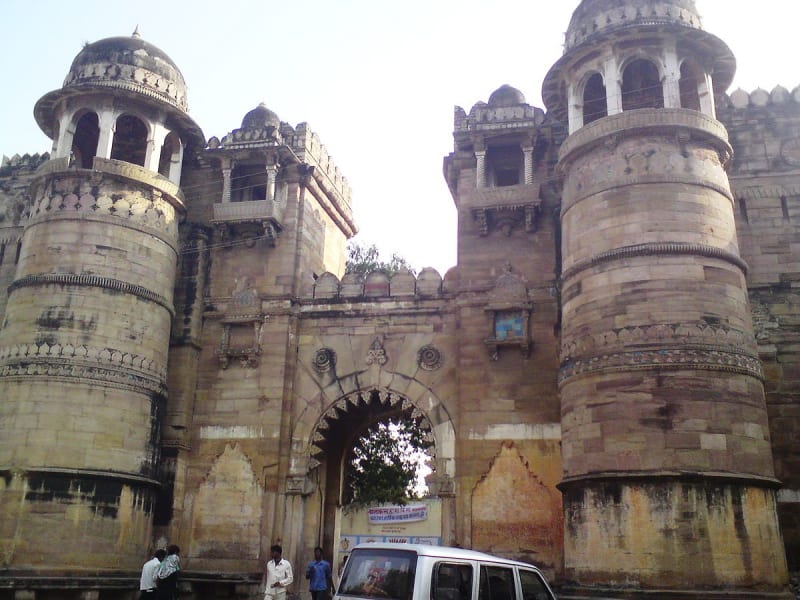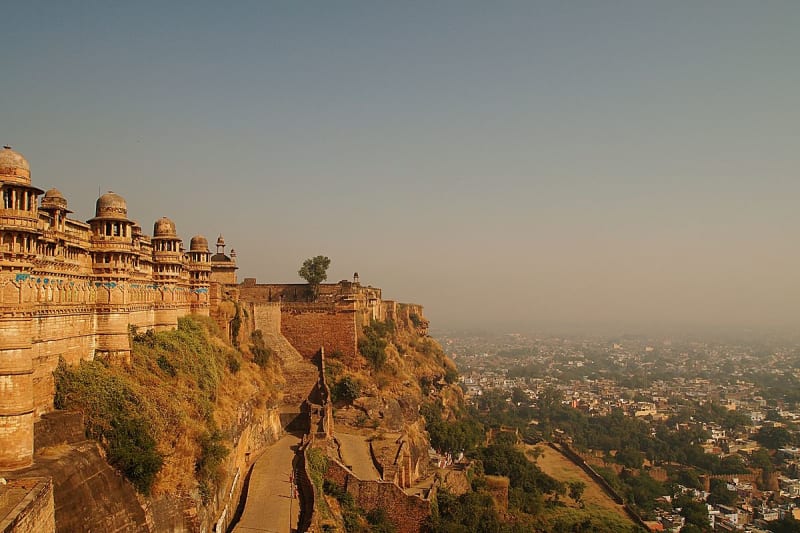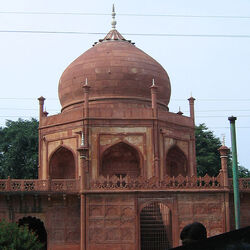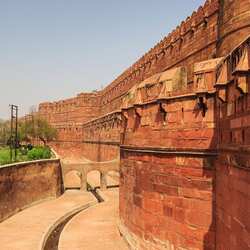Gwalior Fort
The Gwalior Fort has been known in the world since the 6th century. The fort acquired its current appearance in the 14th - 15th centuries. The impregnable and powerful fortress in India, towering on a hill, is lined with yellow-brown sandstone and basalt.

Short description
The Gwalior fort was placed at the intersection of trade routes. Built on a hill, it was provided with additional natural protection and allowed for surveillance of the surrounding area.
The Gwalior fort got its name thanks to a hermit named Gwalip. He once lived in this area and cured the ruler of Suray Sen. The name of the fort became the name of the city.
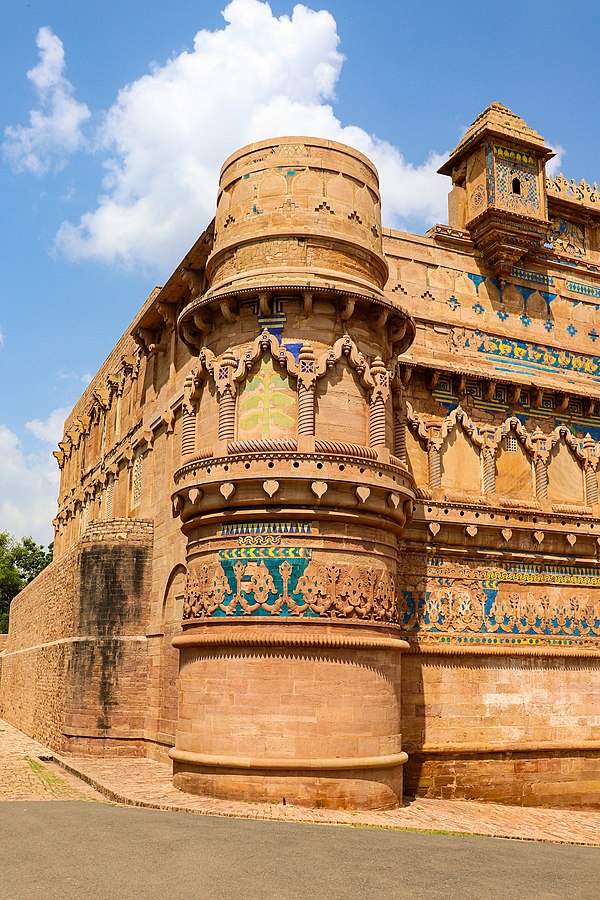
In 1399, when Tamerlane was making a great and brutal campaign against India, the Tomar dynasty ruled the fortress. In 1398, Tamerlane defeated the Indian army that defended Delhi. After the victory, he ordered the slaughter of almost 200,000 Indians so as not to drag prisoners with him. The bloodbath lasted for 5 days. Then the Great Mughal continued his terrible campaign. Tamerlan did not pursue the goal of staying in India. He plundered the country, burned Delhi, took many women and slaves, trying to choose skilled craftsmen, and returned to Samarkand. The Delhi Sultanate, its population and lands were left in a state of chaos and plague.
A bit of history
The fortified Gwalior fort was almost untouched by Tamerlane's bloody campaign. The fortress is located 350 km from Delhi. At this time, Tomar began to build palaces, equipping his residence. During his reign, the main buildings were built. In 1486-1517, a palace was built for his wife Mrignayani. It now houses an archaeological museum.
Later, Tomar built the Man Mandir Palace, where concerts were held, and his wives learned the art of music making. The walls of the palace are decorated with original mosaics with drawings of flowers and animals. The singer Tan Zen sang for Akbar the Great in the palace. After his death, they put a mausoleum in his garden. A music festival is held in the palace at the beginning of winter. There was a prison in the dungeons of Man Mandir. One of her prisoners was the brother of Emperor Auranzeb.
In 1519 The Gwalior fort was taken over by the Lodi Muslim dynasty. In the 18th century, the Gokhad dynasty became the new rulers of the fortress. Until 1948, the fort was part of the Principality of Gwalior. It is now owned by the state government.
A monument to Jhansi Rani, a heroically deceased participant in the famous Sepoy uprising against the British, has been erected on the territory of the fort.
Features of the attraction
The Gwalior Fort occupies an impressive area, it is about 2 km long and about 1 km wide in some areas. Currently, 6 palaces and as many temples, one mosque, several swimming pools and priceless historical monuments dating back to the 11th century have been preserved on the territory of the fort. Huge Jain statues were carved right into the rock near the walls. They have been preserved since the 15th century. The highest is 18 m. According to legend, statues grant enlightenment and intelligence.
The tallest building of the fort is the Teli Ka Mandir Temple, built in the 10th century and dedicated to the god Vishnu. Its height is almost 100 m. Bahu Ka Mandir Temple is located nearby. It was built in the 11th century and is also dedicated to Vishnu.
The history of the Gwalior Fort, the pearl of India, is full of dramatic and tragic events witnessed by the buildings in the fortress. Although they are not very well preserved, they still attract the attention of thousands of tourists.


